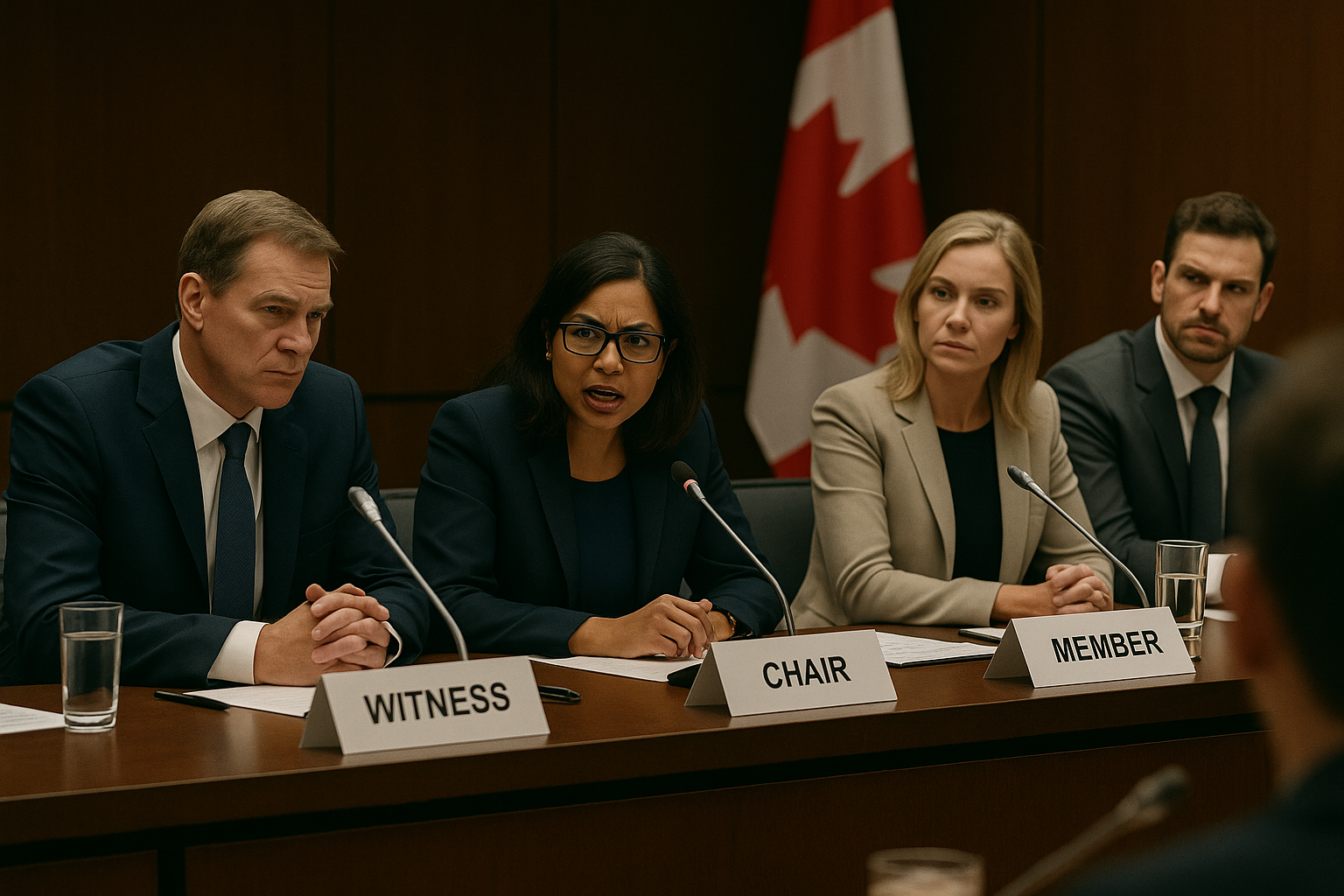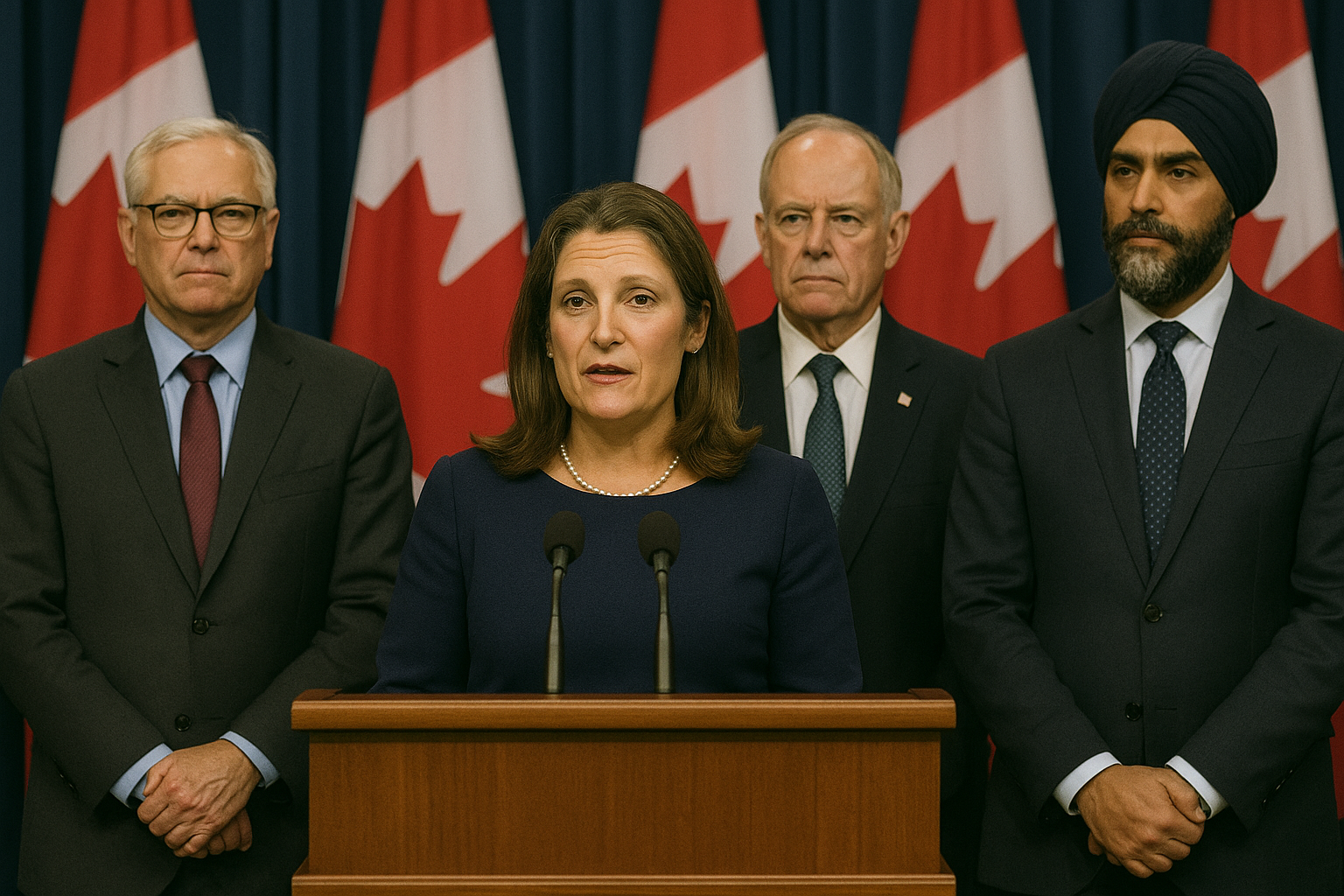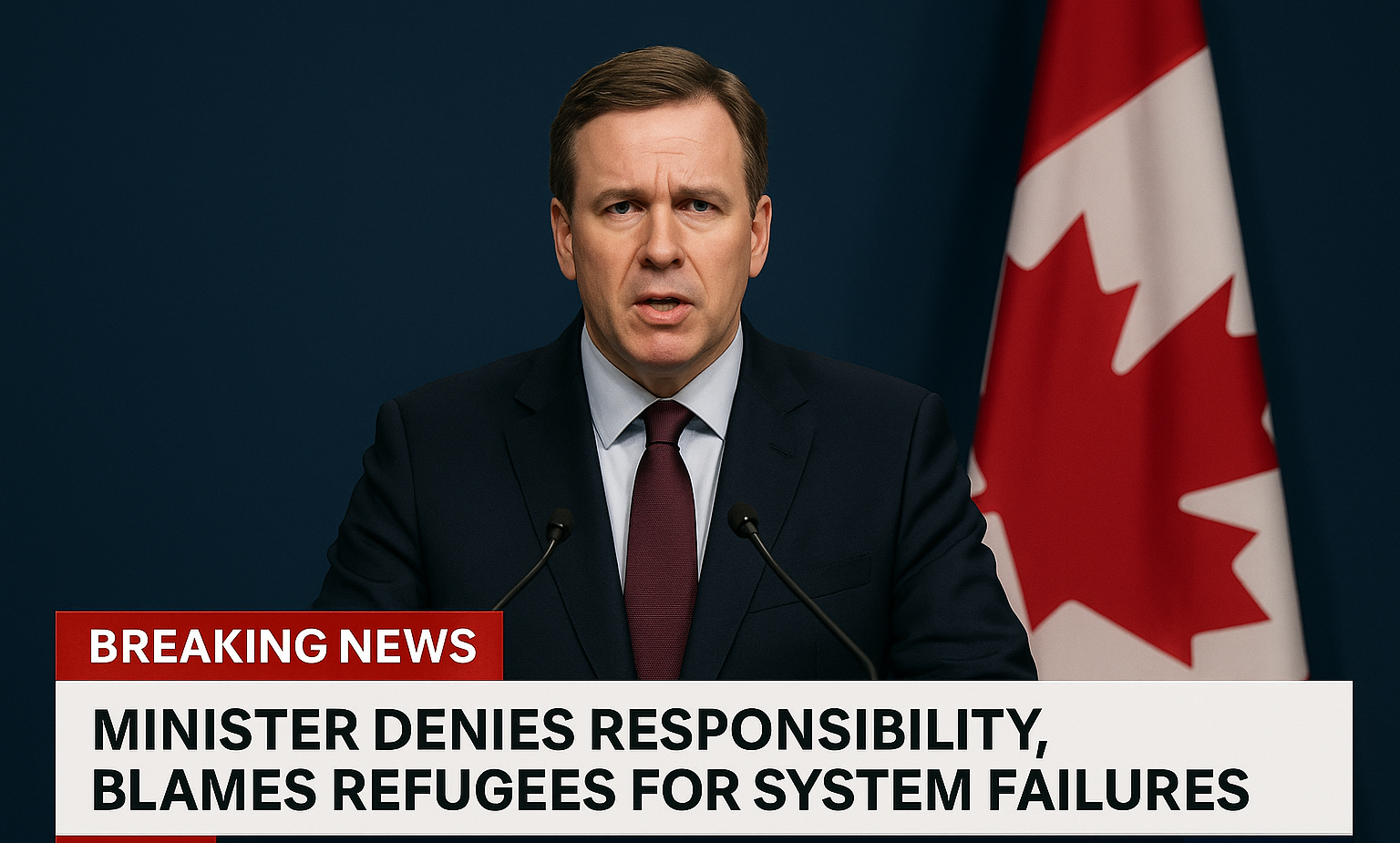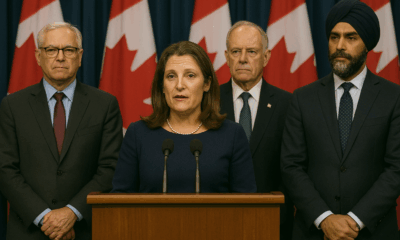Politics
Parliament Debates Generative AI Threats as Canada Faces Policy Vacuum on Synthetic Media and Infrastructure Risks

Ottawa, ON —
Canada’s federal government is facing increasing pressure to act on the rising risks posed by generative artificial intelligence, as Parliament begins early discussions around what some officials are calling a “regulatory void” in the country’s ability to defend against AI-generated disinformation, impersonation, and infrastructure manipulation.
While no legislation has yet been tabled, a heated debate is underway in committee meetings and behind closed doors over whether Canada’s current cybersecurity and communications frameworks are equipped to handle the rapid acceleration of generative tools capable of mimicking voice, identity, and decision-making processes.
“We are staring down a threat vector that doesn’t wait for legislation,” said Liberal MP Ramona Iskander, during a standing committee on Public Safety. “The longer we debate definitions, the more vulnerable our digital ecosystem becomes.”
No National Framework, Patchwork Response
Unlike the European Union or the United States, which have introduced early AI classification and watermarking policies, Canada lacks a national framework to address the use of generative AI across public and private sectors.
Experts warn this gap could prove costly — particularly as critical infrastructure sectors like healthcare, telecom, and utilities increasingly rely on AI-assisted systems for demand forecasting, content generation, and automated decision support.
“We’re already seeing synthetic content enter supply chain communication, emergency response systems, and even public health messaging,” said Dr. Helena Brigg, a senior researcher at the fictional Western Institute for Civic Integrity (WICI). “Without provenance requirements or impersonation safeguards, we are inviting manipulation at scale.”
Key Risks Raised by Lawmakers and Analysts
Several members of Parliament have raised alarms about three specific AI-enabled vulnerabilities in Canada’s digital infrastructure:
- Synthetic Impersonation: No federal law currently prohibits the use of AI to clone the voices or likenesses of public officials, even in sensitive domains like emergency alerts or voter outreach.
- Infrastructure Deception: AI-generated reports or messages can be injected into routine systems — such as delivery scheduling, digital ID verification, or incident notifications — without detection under current monitoring standards.
- Accountability Gaps: In the absence of vendor disclosure laws, generative AI models can be deployed in government-adjacent platforms (e.g. CRM tools, scheduling engines) without review or certification.
“It’s not about the scary fake videos — it’s about the subtle stuff,” said Brigg. “One synthetic document in a utility’s emergency protocol can reroute a response chain. That’s the real risk.”
Partisan Divide and Slow Movement
Support for stronger AI regulation appears to be growing among urban Liberal and NDP MPs, while some Conservative and Bloc Québécois members have expressed concern over overreach, innovation stifling, and jurisdictional confusion, particularly around provincial autonomy in health and education systems.
“We don’t need a national AI panic,” said CPC MP Nolan Rowe (Saskatoon–East). *“We need AI literacy, not blanket regulation.”
Still, internal briefing documents obtained by ODTN News from the Treasury Board Secretariat warn of “growing AI adoption within federal procurement pipelines” and note that several departments are using language models or content generators in pilot workflows without dedicated oversight.
Momentum Building, But Action Remains Elusive
While Public Safety Canada has confirmed it is “closely monitoring” developments around synthetic media and AI risks, no concrete legislative proposal has been announced.
“We’re in the gap between awareness and response,” said WICI’s Brigg. “Unfortunately, that’s exactly where threat actors thrive.”
Covering where tech meets policy and the gaps in between. — Jordan Okeke
ODTN News’ Ayaan Chowdhury contributed to this report.
Politics
Government Stabilizes Systems, But Trust Gap Remains

September 26, 2025 — After days of disruption fueled by cyber incidents and disinformation campaigns, federal officials confirmed today that critical systems have been stabilized. While the immediate crisis appears to be under control, experts warn that the public trust gap exposed during the turmoil may prove harder to repair.
From Disruption to Stability
Technical teams reported that the low-level beaconing attempts detected earlier this week — signs of adversaries probing for re-entry — have been mitigated. “We’ve deployed layered defenses across all networks and worked directly with partners to contain the threat,” said a senior cybersecurity official. “At this stage, systems are operational and secure.”
The government also announced new joint coordination cells between the Canadian Centre for Cyber Security (CCCS) and critical infrastructure operators, designed to ensure faster detection and response to future threats.
Disinformation Still Lingers
Even as systems came back online, the viral deepfake of a minister blaming refugees continued to circulate, creating confusion and amplifying tensions. Analysts note that while the technical recovery was swift, the information environment remains volatile.
“Once trust is shaken, even accurate updates are met with skepticism,” said a policy researcher at a Toronto think tank. “Citizens are asking themselves: if systems can be manipulated, what else should we question?”
Public Reaction
At airports, where Canadians had faced biometric and passport scanning delays, operations returned to normal. Yet travelers expressed mixed feelings. “I’m glad the kiosks work again,” said one passenger in Montreal. “But no one explained what really happened. That silence is why people stop believing.”
Looking Forward
Officials emphasized that rebuilding trust will require transparency and communication, not just technical fixes. Proposals under consideration include public briefings on cyber resilience, stronger counter-disinformation campaigns, and expanding digital literacy programs.
For now, Canadians can expect their systems to function reliably — but the aftershocks of doubt may shape debates on cybersecurity, governance, and accountability for months to come.
Covering where tech meets policy and the gaps in between. — Jordan Okeke
ODTN News’ Ayaan Chowdhury contributed to this report.
Politics
Canadians Face Passport Scanning Chaos at European Airports

September 24, 2025 — Canadian travelers attempting to return home today are caught in sudden chaos across multiple European airports as automated passport scanners fail to process Canadian documents.
At Rome Fiumicino Airport, long lines quickly built up this morning after machines repeatedly rejected Canadian passports with a flashing red error. Passengers described scenes of confusion as staff scrambled to divert travelers to slower, manual processing.
“It was a nightmare,” said one Canadian en route to Toronto. “The kiosk rejected me three times before staff waved me into another line. Dozens of us were stuck with no clear guidance.”
Reports of the same issue surfaced in Milan and Naples, where returning Canadians posted frustrated updates on social media about being unable to clear security. One traveler wrote: “Lines are at a standstill. Canadian passports just won’t scan. People are missing flights.”
Authorities Responding
While no official explanation has been provided, airport sources suggested the problem may stem from a temporary biometric synchronization error affecting Canadian documents in European systems. The Canadian Border Services Agency (CBSA) confirmed it is monitoring the situation but did not issue immediate travel guidance.
Impact on Travelers
As of this afternoon, passengers continued to face delays of up to several hours. Airline staff reported families missing connections as the backlog grew. “We’re moving people as fast as we can, but when one country’s passports won’t scan, the whole system slows down,” one gate agent said.
Outlook
The disruption remains, but ODTN News will continue monitoring for updates. Travelers returning to Canada are advised to prepare for longer processing times and consider arriving at airports earlier than usual until systems are confirmed stable.
Covering where tech meets policy and the gaps in between. — Jordan Okeke
Politics
Disinformation Spike: Deepfake of Minister Blaming Refugees Goes Viral

Ottawa, ON — A manipulated deepfake video of a Canadian cabinet minister has spread rapidly across social media today, sparking outrage and fueling false narratives about refugees.
The video, which falsely appears to show the minister blaming refugees for recent social and economic challenges, was quickly identified by cybersecurity analysts as a deepfake disinformation campaign. Despite expert warnings, the clip has already been shared tens of thousands of times across platforms like X, TikTok, and Facebook.
Rapid Spread
Researchers tracking the incident say the video first surfaced early this morning in fringe forums before making its way onto mainstream social media channels. Spreading rapidly, hashtags connected to the video are trending nationally.
“The quality of the manipulation is high enough that casual viewers may not realize it’s fake,” said a threat intelligence analyst. “The speed at which this spread shows how weaponized deepfakes can destabilize public discourse.”
Government Response
The minister’s office issued a statement calling the video “entirely fabricated and malicious.” The statement urged Canadians not to share the clip and confirmed that the case has been referred to federal cybersecurity authorities.
Officials also warned that foreign influence operations have historically used disinformation to sow division in Canada, particularly around refugee and immigration issues.
Public Impact
Community groups expressed concern that the video could inflame tensions. “This kind of content puts refugees at greater risk of harassment,” said one advocacy organization. “It exploits existing fears and undermines social cohesion.”
Looking Ahead
Experts caution that deepfake campaigns are becoming more sophisticated and more frequent. With upcoming policy debates on immigration, disinformation efforts targeting public trust are expected to intensify. For now, fact-checkers and cybersecurity agencies are working to debunk the clip and limit its spread, but the incident highlights how easily trust in democratic institutions can be eroded by synthetic media.
Covering where tech meets policy and the gaps in between. — Jordan Okeke
ODTN News’ Ayaan Chowdhury contributed to this report.
-

 Retail Watch4 months ago
Retail Watch4 months agoCalgary Small Business Hit by Sudden Payment Outage, Sparks Cybersecurity Concerns
-

 Public5 months ago
Public5 months agoReddit Thread Over ‘Inventory Drift’ Surges as Canadians Vent Over Retail Glitches
-

 Cybersecurity5 months ago
Cybersecurity5 months agoCanadian Airline NorthSky Faces Cyberattack, Disrupting Online Services
-

 Business8 months ago
Business8 months agoCanadian Software Vendor Breach Exposes Cloud Environments Across Energy Sector
-

 Retail Watch5 months ago
Retail Watch5 months agoUnderstaffed and overwhelmed, IT teams face rising pressure as retail digitization accelerates
-

 Business4 months ago
Business4 months agoAre Canadian Companies Learning from Global Cyber Attacks? Insider Insights into the Secret Downfall of Canadian Businesses
-

 Politics4 months ago
Politics4 months agoNationwide Government System Outage Paralyzes Public Services
-

 Politics5 months ago
Politics5 months agoCanada, ESB Sign Digital Security Pact to Counter Global Telecom Threats















